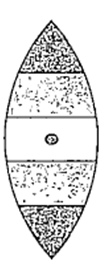 Multiple Choice Questions
Multiple Choice QuestionsAccording to cartesian sign convention, in ray optics
all distance are taken negative
all distances in the direction of incident ray are taken positive
all distances are taken positive
al distances in the direction of incident ray are taken negative
B.
all distances in the direction of incident ray are taken positive
Accordmg to cartesian sign convention, in ray optics all distance in the drrectron of incident ray are taken positive.
A linear object of height 10 cm is kept in front of a concave mirror of radius of curvature 15 cm, at a distance of 10 cm. The image formed is
magnified and erect
magnified and inverted
diminished and erect
diminished and inverted
During scattering of light, the amount of scattering is inversely proportional to ........ of wavelength of light.
square
fourth power
half
cube
A ray of light travels from an optically denser to a rarer medium. The critical angle for the two media is C. The maximum possible deviation of the ray will be
2C
Light passes successively through two polarimeter tubes each of length 0.29 m. The first tube contains dextro rotatory solution of concentration 60 kgm-3 and specific rotation 0.01 rad m2 kg-1. The second tube contains laevo rotatory solution of concentration 30 kgm-5 and specific rotation 0.02 rad m2 kg-1. The net rotation produced is
0°
15°
10°
20°
vo and vE represent the velocities, ,and μE the refractive indices of ordinary and extraordinary rays for a double refracting crystal. Then
vo ≤ vE , μo ≤ μE, if the crystal is quartz
vo ≥ vE , μo ≤ μE , if the crystal is calcite
vo ≥ vE , μo ≥ μE , if the crystal is quartz
vo ≤ vE , μo ≥ μE , if the crystal is calcite.
The light reflected by a plane mirrormay form a real image
if the rays incident on the mirror are converging
if the rays incident on the mirror are diverging
under no circumstances
if the object is placed very close to the mirror
A convex is made up of three different materials as shown in the figure. For a point object places on its axis, the number of images formed are

5
1
3
4
Light appears to travel in straight lines because
light consists of very small particles
the frequency of light is very small
the velocity of light is different for different colours
the wavelength of light is very small
An object is placed 12 cm to the left of a converging lens of focal length 8 cm. Another converging lens of 6 cm focal length is placed at a distance of 30 cm to the right of the first lens. The second lens will produce
a virtual enlarged image
no image
a real inverted image
a real enlarged image
